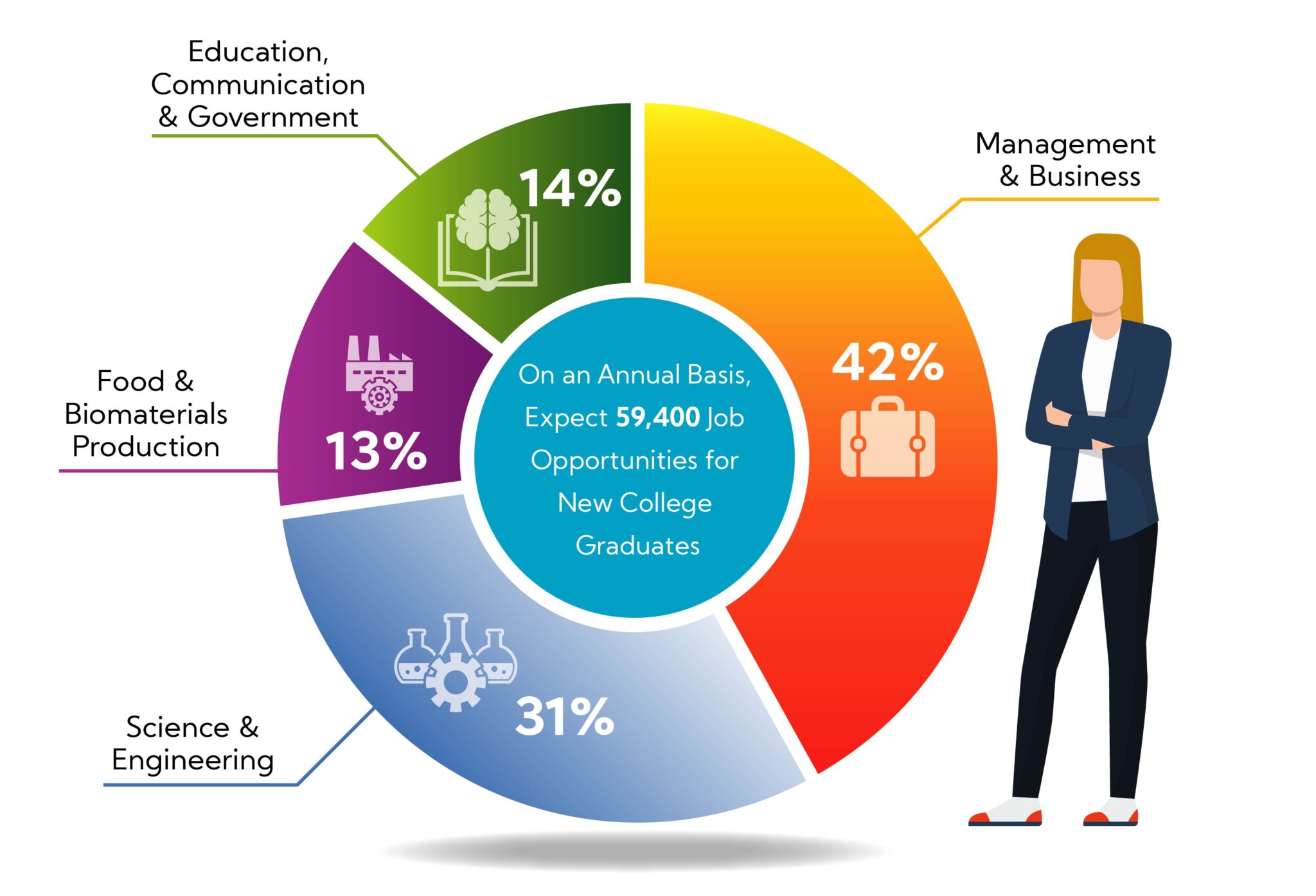USDA Employment Report Shows Strong Outlook for College Graduates Interested in Agbioscience

Preface
A 2020 Pandemic Note: The underlying study and preparation of this report began in September 2019 when global socio-economic conditions were much different from today. While the average annual projections of employment opportunities and qualified graduates in this report are for a five-year span and developed in concert with U.S. Bureau of Labor Statistics forecasts for 2018-2028, fewer than the average annual number of employment opportunities will be realized in 2020. The project team anticipates expanding employment opportunities in 2021 and during the remainder of the period if the pandemic can be controlled. The team feels strongly that the need for graduates and available employment opportunities in the food, agriculture, renewable natural resources and the environment sector will remain steady and strong.
Graduates
In the United States, between 2020 and 2025, the number of new college graduates annually seeking employment opportunities in food, agriculture, renewable natural resources and the environment will remain strong (approx. 59,400). Graduates from degree programs in food, agriculture, renewable natural resources and the environment will comprise approximately 61% (36,100) of the new graduate pool. Graduates with allied degrees – degree specializations offered by public and private non-profit higher education programs in biological sciences, engineering, health sciences, business, communication, etc. – who are expected to compete for employment with higher education graduates in food, agriculture, renewable natural resources and the environment, will comprise 39% (23,300) of the new graduate supply pool (Figs. 2a and 2c). These figures include graduates with baccalaureate and post-graduate and professional degrees.
Expect the largest pool of new college graduates to be in Management and Business (25,700 graduates per year, 43% of the total); followed by Science and Engineering (17,100 graduates per year, 29% of the total); Education, Communications and Government Services (8,700 graduates per year, 15% of the total); and Food and Biomaterials Production (7,900 graduates per year, 13% of the total) (Figs. 2a and 2b). Compared to allied majors, new graduates with degrees in food, agriculture, renewable natural resources and the environment will comprise approximately 61% of Management and Business graduates (15,600 vs. 10,100); 54% of Science and Engineering graduates (9,200 vs. 7,900); 47% of Education, Communications and Government Services graduates (4,100 vs. 4,600); and 92% of Food and Biomaterials Production graduates (7,300 vs. 600) (Figs. 2c and 2d).
Source: Purdue University
